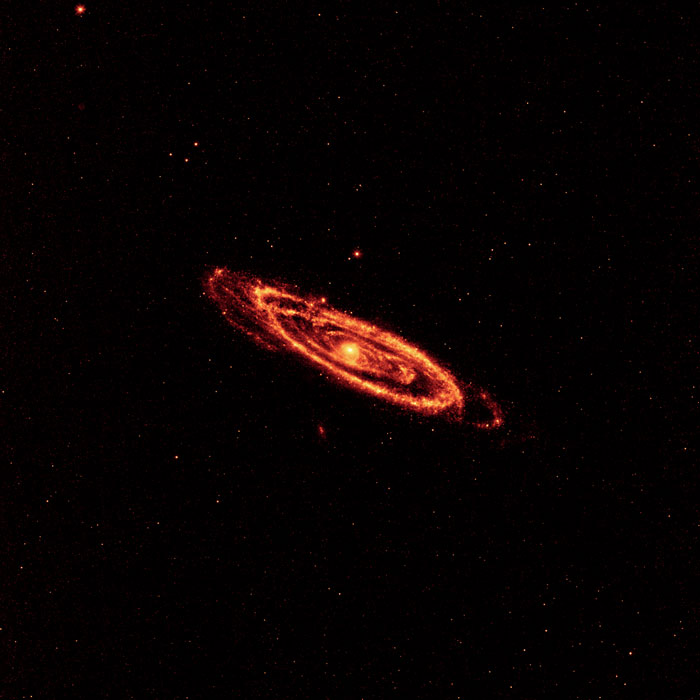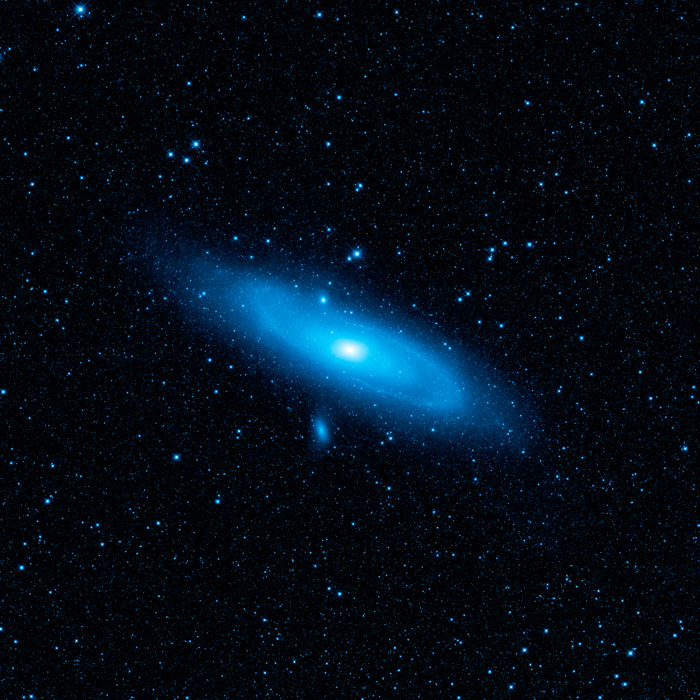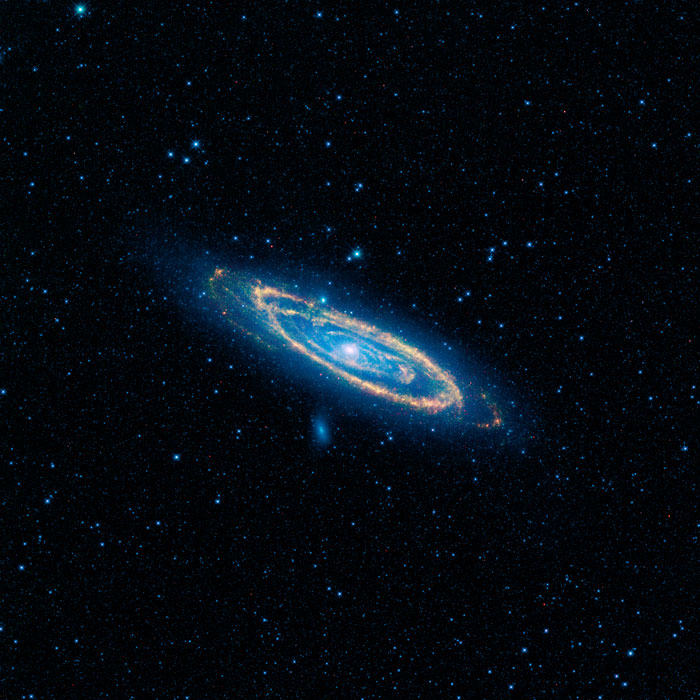



|
Feb. 17, 2010 - This image from NASA's Wide-field Infrared Survey Explorer, or WISE, highlights the dust that speckles the Andromeda galaxy's spiral arms. It shows light seen by the longest-wavelength infrared detectors on WISE (12-micron light has been color coded orange, and 22-micron light, red). The hot dust, which is being heated by newborn stars, traces the spidery arms all the way to the center of the galaxy. Telltale signs of young stars can also be seen in the centers of Andromeda's smaller companion galaxies, M32 and M110. Andromeda, also called M31, is 2.5 million light-years away, and is the nearest large neighbor to our Milky Way galaxy. Image Credit: NASA/JPL-Caltech/WISE Team
Feb. 17, 2010 - This image from NASA's Wide-field Infrared Survey Explorer, or WISE, highlights the Andromeda galaxy's older stellar population in blue. It was taken by the shortest-wavelength camera on WISE, which detects infrared light of 3.4 microns. A pronounced warp in the disk of the galaxy, the aftermath of a collision with another galaxy, can be clearly seen in the spiral arm to the upper left side of the galaxy. Image Credit: NASA/JPL-Caltech/WISE Team
Feb. 17, 2010 - The immense Andromeda galaxy, also known as Messier 31 or simply M31, is captured in full in this new image from NASA's Wide-field Infrared Survey Explorer, or WISE. The mosaic covers an area equivalent to more than 100 full moons, or five degrees across the sky. WISE used all four of its infrared detectors to capture this picture (3.4- and 4.6-micron light is colored blue; 12-micron light is green; and 22-micron light is red). Blue highlights mature stars, while yellow and red show dust heated by newborn, massive stars. Andromeda is the closest large galaxy to our Milky Way galaxy, and is located 2.5 million light-years from our Sun. It is close enough for telescopes to spy the details of its ringed arms of new stars and hazy blue backbone of older stars. Also seen in the mosaic are two satellite galaxies, known as M32, located just a bit above Andromeda to the left of center, and the fuzzy blue M110, located below the center of the great spiral arms. These satellites are the largest of several that are gravitationally bound to Andromeda. The Andromeda galaxy is larger than our Milky Way and contains more stars, but the Milky Way is thought to perhaps have more mass due to its larger proportion of a mysterious substance called dark matter. Both galaxies belong to our so-called Local Group, a collection of more than 50 galaxies, most of which are tiny dwarf systems. In its quest to map the whole sky, WISE will capture the entire Local Group. Image Credit: NASA/JPL-Caltech/WISE Team |
||||||||||||||||||||||
|
|||


